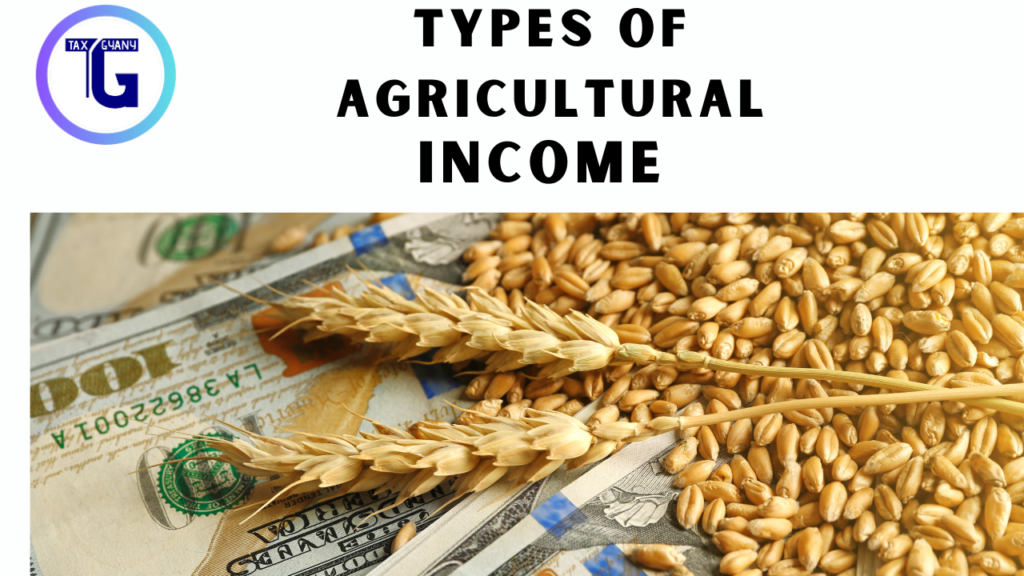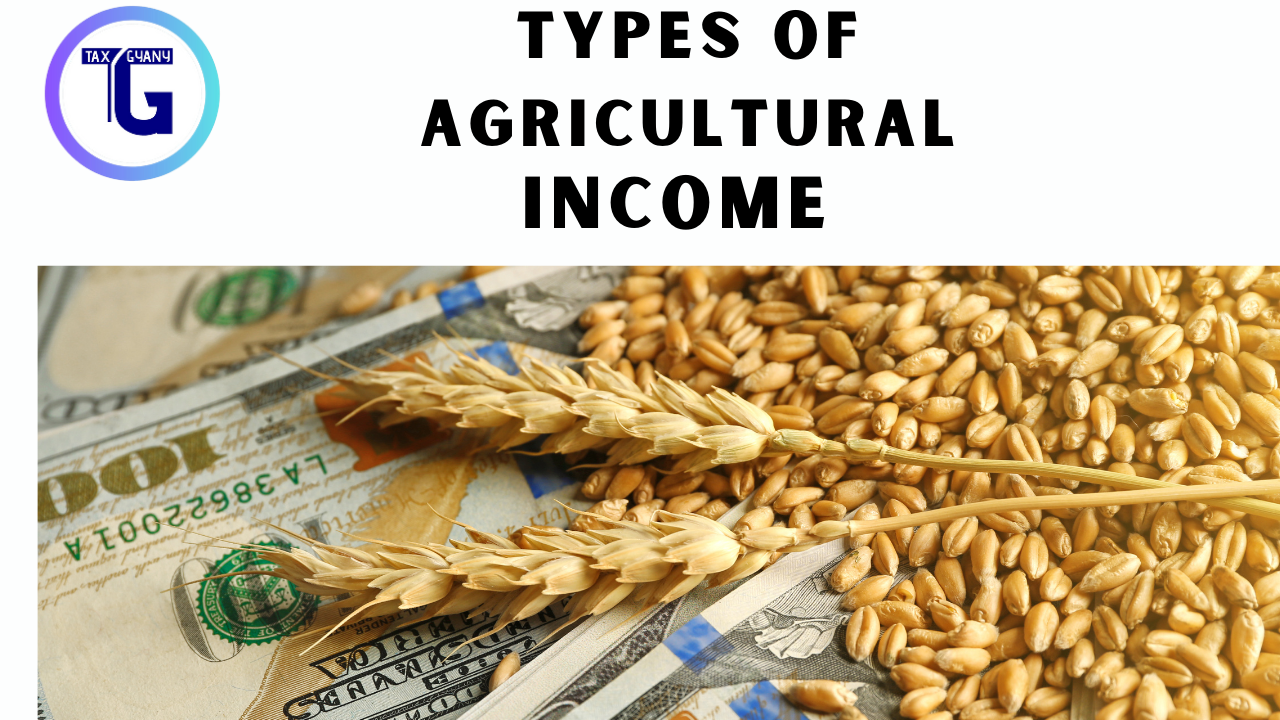Types of Agricultural Income Agricultural Income forms a significant part of the economy in many countries, playing a crucial role in food production and rural livelihoods. However, not all agricultural income is alike, and understanding the various types is essential for tax planning and compliance. In this blog post, we’ll delve into the different types of agricultural income, shedding light on their characteristics and implications for taxpayers.
Understanding Agricultural Income : Types of Agricultural Income
- Definition
Agricultural income encompasses earnings derived from agricultural activities such as farming, cultivation of crops, animal husbandry, poultry farming, dairy farming, and allied activities. It is a vital component of the rural economy and contributes to food security and livelihoods.

- Tax Treatment
In many countries, including India, agricultural income is exempt from Income tax under the Income Tax Act. However, the definition and treatment of agricultural income may vary across jurisdictions, and certain types of agricultural income may be subject to taxation.
Diversified Sources: Agricultural income is derived from diverse sources such as crop cultivation, livestock farming, dairy production, poultry, aquaculture, horticulture, forestry, agro-processing, and agri-tourism. Each source contributes differently to the overall income, depending on factors like geographical location, climate, soil type, market demand, and technological advancements.
Seasonal Nature: Agricultural income is often subject to seasonal fluctuations due to the nature of agricultural activities. Crop harvests, for instance, occur at specific times of the year, leading to periodic spikes in income. Livestock farming may also have seasonal variations in income, influenced by factors such as breeding cycles and market demand for meat, milk, or eggs.
Productivity and Efficiency: The level of productivity and efficiency in agricultural operations directly impacts income generation. Higher yields per acre of land, increased livestock productivity, efficient resource utilization (water, fertilizers, pesticides), and optimized production processes contribute to higher agricultural income. Adopting modern farming techniques, precision agriculture, and mechanization can enhance productivity and efficiency.
Types of Agricultural Income
- Crop Income
Crop income refers to the revenue generated from the cultivation and sale of crops such as grains, vegetables, fruits, and spices. It includes proceeds from the sale of harvested crops, seeds, and other agricultural produce.
- Livestock Income
Livestock income comprises earnings from activities related to animal husbandry, including the sale of livestock such as cattle, poultry, sheep, goats, and pigs. It also includes income from the sale of milk, eggs, wool, and other animal products.
- Forestry Income
Forestry income pertains to earnings derived from forestry and timber-related activities, including the sale of timber, wood products, resin, and other forest produce. It encompasses both commercial and non-commercial forestry operations.
- Fisheries Income
Fisheries income involves revenue generated from fishing activities, aquaculture, and fish farming. It includes the sale of fish, shellfish, crustaceans, and other aquatic organisms, as well as income from fish hatcheries and fish processing.
- Allied Agricultural Income
Allied agricultural income encompasses earnings from activities that support or complement primary agricultural operations, such as beekeeping, sericulture (silk farming), floriculture (flower cultivation), and agro-processing industries.
- Agricultural Rent and Lease Income:
Agricultural rent and lease income include earnings from renting out or leasing agricultural land, buildings, machinery, or equipment to other farmers or businesses engaged in agricultural activities.
- Agri-tourism Income:
Agri -tourism income refers to earnings from offering tourism-related services and experiences on agricultural land. This includes income from farm stays, tours, recreational activities, and the sale of farm products to tourists.
Conclusion
In conclusion, understanding the various types of agricultural income is essential for taxpayers engaged in agricultural activities. While agricultural income is generally exempt from income tax in many countries, it’s crucial to differentiate between different types of agricultural income for tax planning and compliance purposes. By comprehensively understanding the nuances of agricultural income, taxpayers can effectively manage their tax liabilities and ensure compliance with tax regulations.
Sources : https://cleartax.in/s/agricultural-income
For More Information : https://taxgyany.com/

